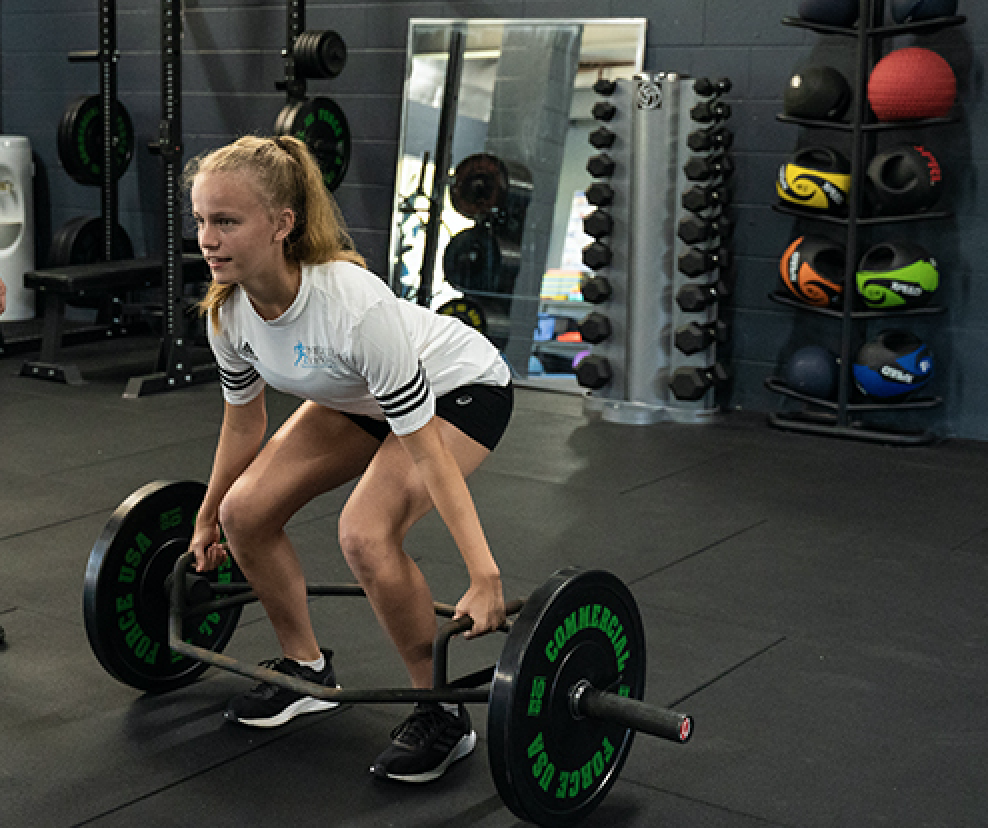
The performance benefits of strength training for adult runners, and endurance athletes in general, has been recognised for quite some time. However, in our experience at Central Performance, resistance training for younger runners (12-18) remains an unappreciated area of training. There is a lot of misinformation around the benefits and implementation of strength training for children and adolescents which has resulted in strength and conditioning being neglected by many athletes, parents and coaches.
While certain fears are understandable, strength training does not necessarily mean just lifting heavy weights. Strength training for the young athlete is about long term, progressive development of overall athleticism. This might mean bodyweight strength exercises, medicine ball circuits, jumps, throws or flexibility, mobility and stability work. It will look different for each individual.
Engaging in strength training from a young age can increase the ceiling of development of motor skills, power, elasticity and robustness in the youth athlete.
Overall Health Benefits Of Strength Training
Sadly, literature suggests that there is a declining muscular strength and fitness, and motor skill competence of school children (1). This is likely due to the increase in sedentary lifestyles due to the use of screens and tablets for entertainment and increased dependence on transport.
In the 2014 British Journal of Sports Medicine International Consensus paper (1) states: an appropriately designed resistance training program should be viewed as an essential component of preparatory training programs for aspiring young athletes. In addition to this, they stated that youth who do not participate in activities that enhance muscle strength and motor skills early in life may be at increased risk for negative health outcomes later in life.
Evidence indicates that resistance training can have a positive affect on:
• bone mineral density
• overall skeletal health
• sports related injury risk
• insulin sensitivity in overweight adolescents
• cardiac function in obese children
• body composition
• body fat
• psychological health and wellbeing of children and adolescents
Improves overall athleticism, robustness, and sporting performance
By engaging in strength training from a young age, young athletes will be better prepared tolerate the demands of long distance running and competition (3). Research demonstrates that resistance training programs can benefit youth of all ages, including children as young as 5-6yrs (3). Strength gains at the pre pubescent age are primarily due to the neural adaptations. For the athlete in late adolescence the additional gains seem to appear via lean body mass and muscle cross sectional area. (2).
Young athletes are unlikely to reach their potential in regards to muscular strength via their sport in isolation. Leek et al (4) reported that many youth sports do not provide sufficient time at the moderate to vigorous intensity range required for daily recommendations. Faigenbaum et al (1) to determined that ‘an integrative training program grounded in resistance training combined with sports may help fill the critical need for young athletes to maximise athletic performance and maintain injury free competition’.
MYTHS ABOUT STRENGTH TRAINING FOR ADOLESCENTS
Myth 1: Youth Resistance Training ‘Stunts Bone Growth’

The myth that resistance training is detrimental for the young athletes developing skeleton have been debunked by evidence that suggests that the best time to improve bone structure and build bone mass is in during childhood via strength training (including plyometrics). Mechanical stress placed on the growth plates may actually be beneficial for bone formation, density, and growth (2). Athletes and coaches who avoid participation in weight bearing physical activity during these stages of growth may unknowingly predispose individuals to longer term negative bone health implications (2).
Myth 2: Resistance Training Can Offset The Effects Of Early Specialisation
Youth resistance training provides a diverse stimulus to the developing body of a young runner, partially reducing some of the possible consequences of early specialisation. Specialising in running alone, particularly high mileage training, at a young age may potentially increase injury rate and burnout. Research recommends that youth athletes and parents should avoid early sports specialization. Playing a wide range of sports and activities have been shown to enhance athletic development, minimize overtraining and burnout as well as reducing injury risk (3).
Capitalizes on the window of opportunity to develop new skills & movement patterns
During childhood and adolescence there is an increased level of neural plasticity. There is the opportunity and capacity to develop and improve muscular strength and power that does not exist in older athletes. Strength and power are the foundation to athletic development and performance. Strength training allows youth athletes to work on muscular imbalances and inefficient movement patterns early in life. This means that they will be potentially less likely to suffer from avoidable injuries, thus increasing the likelihood of peak performance (2).
Key Considerations For Youth Resistance Training
Despite common belief and opinion, there is no harm to a young or adolescent athlete incorporating strength and conditioning work into their training.
Youth athletes should complete between 1-3 strength sessions per week. Sessions should be no longer than an hour, even 30 minutes would be appropriate, due to competing life interests at this stage of life. Training should be challenging, fun and engaging and supervised by a qualified practitioner, preferably someone who also understands the demands of the sports played by the athlete. Training should begin with a thorough movement assessment and screen. There should be no rush to have the athlete lifting maximal weights, technique and movement should be the primary focus.
References
1. Lloyd RS, Faigenbaum AD, Stone MH, et alPosition statement on youth resistance training: the 2014 International ConsensusBritish Journal of Sports Medicine 2014;48:498-505.
2. Faigenbaum AD, Lloyd RS, MacDonald J, et alCitius, Altius, Fortius: beneficial effects of resistance training for young athletes: Narrative review. British Journal of Sports Medicine 2016;50:3-7.
3. Bergeron MF, Mountjoy M, Armstrong N, et al. International Olympic Committee consensus statement on youth athletic development. Br J Sports Med 2015;49:843-851.
4. Leek D, Carlson J, Cain KL, et al. Physical activity during youth sports practices. Arch Pediatr Adolsec Med 2010; 165:294-9.

